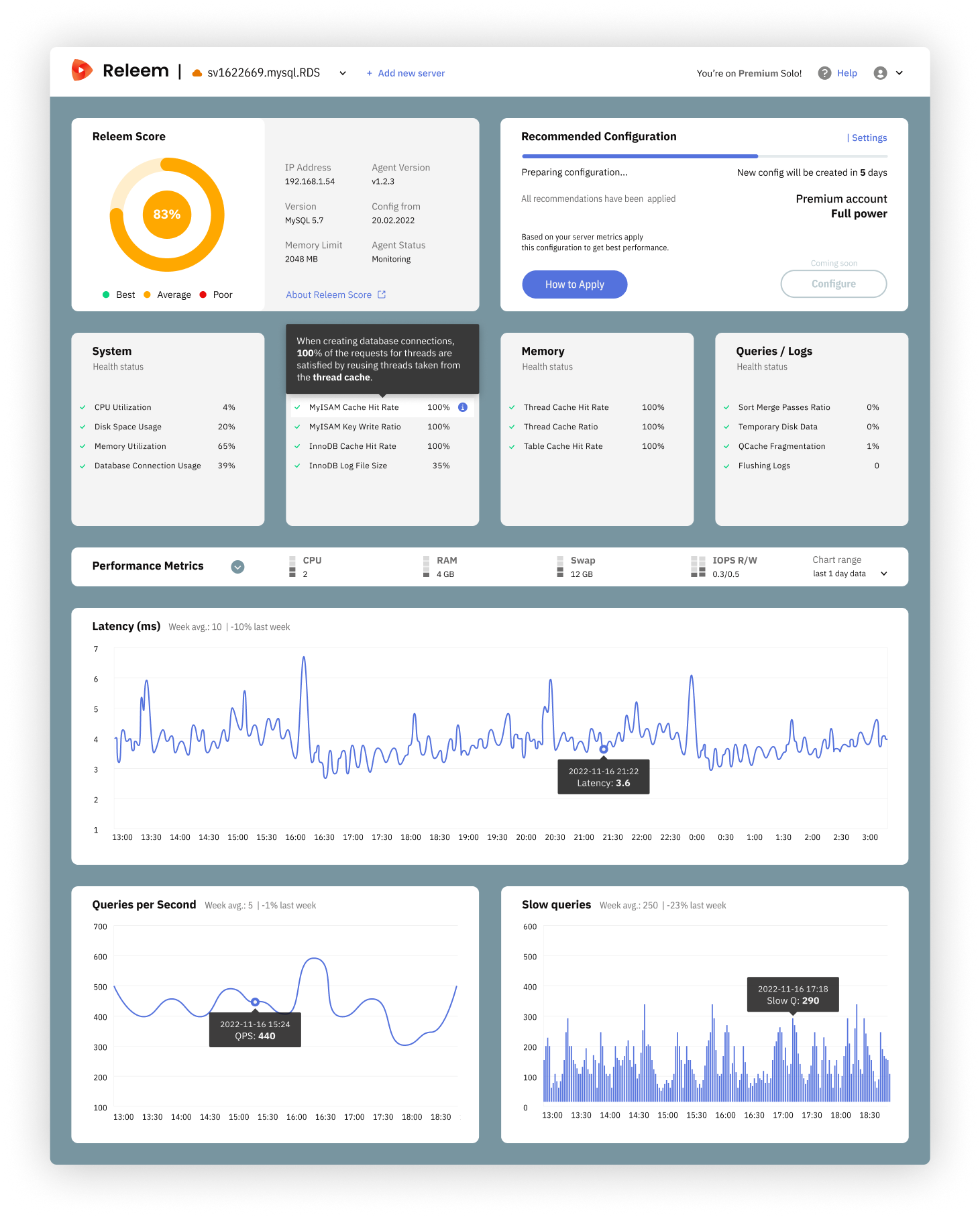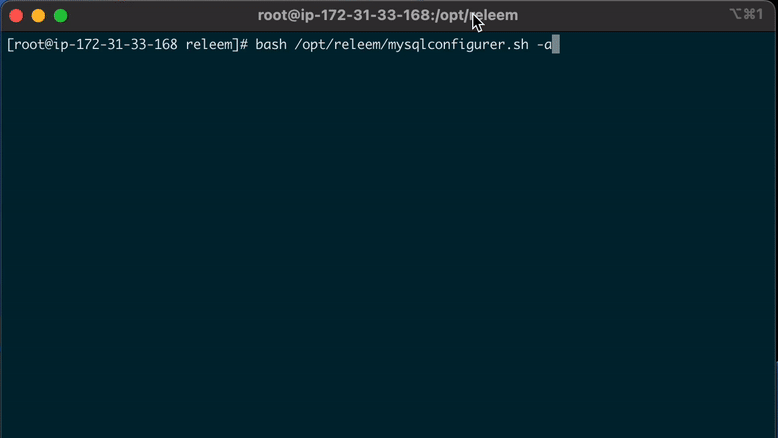Docs |
Compare MySQLTuner |
SQL Query Optimization |
Blog
The present repository contains the source code of the Releem Agent.
Releem is a simple MySQL tuning tool to improve database performance and reduce the costs of servers. Using Releem, you can see general Performance metrics, and it will assist you in preparing performance-optimized configurations tailored for your MySQL server based on Workload, MySQL metrics, and Database size.
With Releem we are trying to bring top-notch experience in performance tuning and save thousands of software engineers hours.
- Clutter Free: Releem provides simple dashboard and it cuts through the noise. No layers of menus, no need for custom reports. Get all the important metrics on one single page. No training necessary.
- Hassle free: Simple one-step Installation on most popular Linux platforms and Support of all MySQL/MariaDB/Percona versions.
- Performance Booster: Recommended configuration delivers a 30% boost to MySQL performance compare to the default configuration.
- Simplified Monitoring: MySQL Health Checks greatly simplifies the process of monitoring and maintaining a healthy database by focusing on key aspects that describe the efficiency and "best practices" of using Memory, Connections, Logs, Cache, Disk, Indexes, and Threads. Releem Score metric calculates by summarizing Health Checks statuses.
- Security: Security is our top priority. Releem does not use your database data. It uses only MySQL metrics and system information, and HTTPS to transfer them. Releem Agent is open-source and can be reviewed to ensure it meets your security requirements.
- Email report: Keep an eye on your servers with weekly email reports.
- Simple Applying: Releem Agent allows simply apply recommended MySQL configuration just in one command.
Releem Agent - Has been installed on servers, collects MySQL metrics, sends them to Cloud Platforms, and applies MySQL configurations. Open Source daemon built on Go.
Releem Cloud Platform - Analyzes collected metrics, detects performance issues, and recommends MySQL configurations.
Releem Customer Portal - Web interface displays recommended configurations and current information about all MySQL servers with installed Releem Agent. It looks like this on the screenshot.
The easiest way to get started with Releem is with our managed service in the cloud and one step installation command. It takes up to 5 minutes to start monitoring your MySQL servers and get recommendations to improve performance.
To start using Releem just sign up at https://releem.com and install Releem Agent on your server.
Join the Releem Community on Slack.
- MySQL 8.0, MySQL 5.7, MySQL 5.6, MySQL 5.5
- MariaDB 10.1, MariaDB 10.2, MariaDB 10.3, MariaDB 10.4, MariaDB 10.5, MariaDB 10.6, MariaDB 10.7, MariaDB 10.8, MariaDB 10.9, MariaDB 10.10, MariaDB 10.11, MariaDB 11.0
- Percona 8.0, Percona 5.7, Percona 5.6, Percona 5.5
- Centos, CloudLinux, Debian, Ubuntu, RockyLinux
- Amazon RDS MySQL, Amazon RDS Aurora, Amazon RDS MariaDB
*** MINIMAL REQUIREMENTS ***
- Unix/Linux based operating system (tested on Linux, BSD variants, and Solaris variants)
- Unrestricted read access to the MySQL server
We tested the results with Sysbench on a virtual server running Debian 9 (2 CPU, 2GB Ram) the table contained 10 million entries. Two configurations were tested, the MySQL default configuration and the configuration recommended by the Releem service. The tests were two-step: read (test1) only and read/write (test2).
Recommended configuration delivered a 30% boost to MySQL performance compared to the default configuration.
Follow this links to see results: MySQL 5.7 Benchmark MySQL 8 Benchmark
We welcome feedback from our community. Take a look at our feedback board directly here on GitHub. Please let us know if you have any requests and vote on open issues so we can better prioritize.
To stay up to date with all the latest news and product updates, make sure to follow us on Twitter, LinkedIn.
You can help us by reporting problems, suggestions or contributing to the code.
Go to our issue tracker and check if your problem/suggestion is already reported. If not, create a new issue with a descriptive title and detail your suggestion or steps to reproduce the problem.


